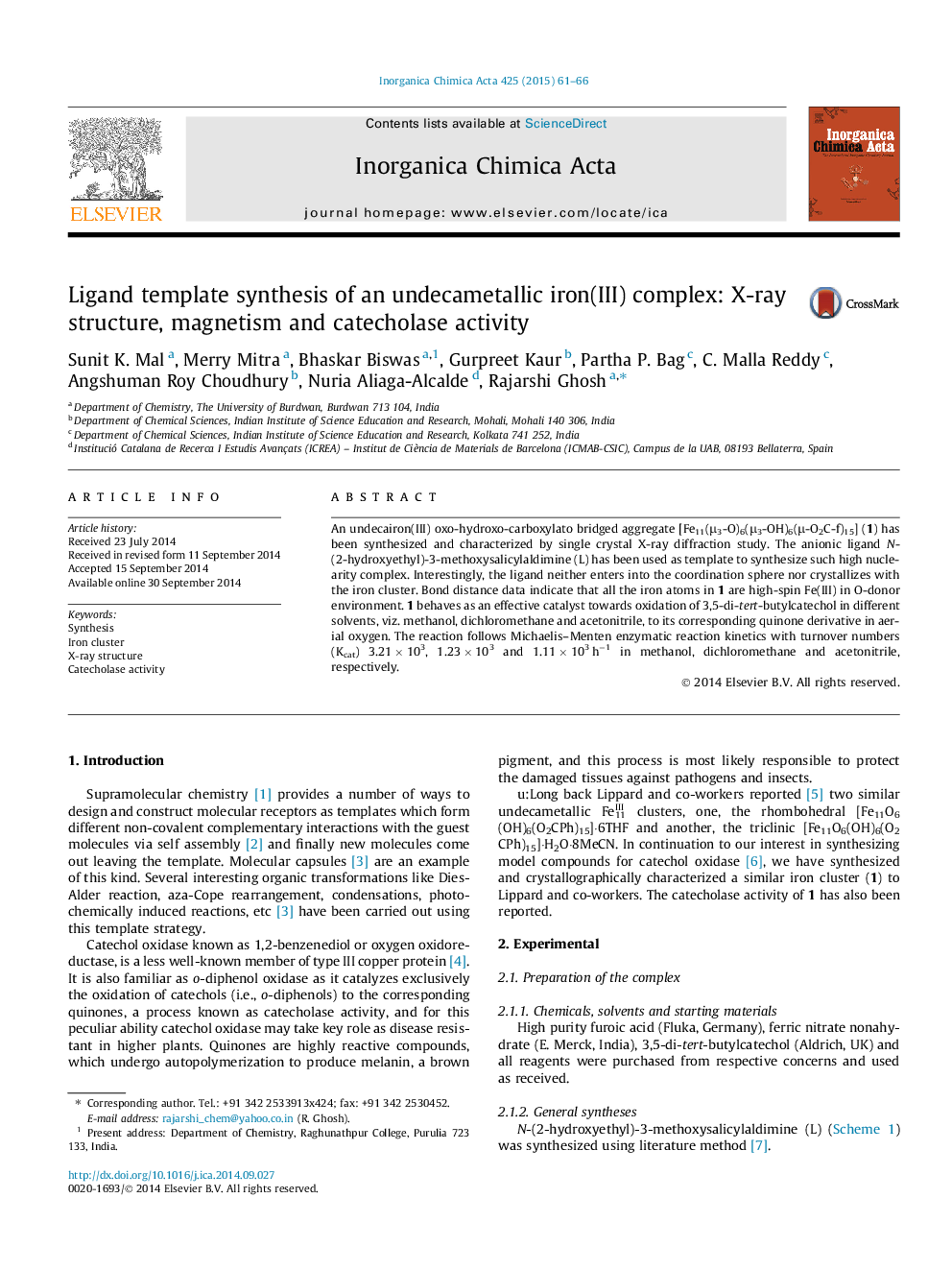| Article ID | Journal | Published Year | Pages | File Type |
|---|---|---|---|---|
| 1309265 | Inorganica Chimica Acta | 2015 | 6 Pages |
•Ligand template synthesis and X-ray structure of a Fe11 cluster.•Magnetic measurement of the Fe11 cluster.•Catecholase activity of the cluster in different solvents.
An undecairon(III) oxo-hydroxo-carboxylato bridged aggregate [Fe11(μ3-O)6(μ3-OH)6(μ-O2C-f)15] (1) has been synthesized and characterized by single crystal X-ray diffraction study. The anionic ligand N-(2-hydroxyethyl)-3-methoxysalicylaldimine (L) has been used as template to synthesize such high nuclearity complex. Interestingly, the ligand neither enters into the coordination sphere nor crystallizes with the iron cluster. Bond distance data indicate that all the iron atoms in 1 are high-spin Fe(III) in O-donor environment. 1 behaves as an effective catalyst towards oxidation of 3,5-di-tert-butylcatechol in different solvents, viz. methanol, dichloromethane and acetonitrile, to its corresponding quinone derivative in aerial oxygen. The reaction follows Michaelis–Menten enzymatic reaction kinetics with turnover numbers (Kcat) 3.21 × 103, 1.23 × 103 and 1.11 × 103 h−1 in methanol, dichloromethane and acetonitrile, respectively.
Graphical abstractAn undecairon(III) oxo-hydroxo-carboxylato bridged aggregate [Fe11(μ3-O)6(μ3-OH)6(μ-O2C-f)15] (1) has been synthesized and characterized by single crystal X-ray diffraction study. The anionic ligand N-(2-hydroxyethyl)-3-methoxysalicylaldimine (L) has been used as template to synthesize such high nuclearity complex. Interestingly, the ligand neither enters into the coordination sphere nor crystallizes with the iron cluster. Bond distance data indicate that all the iron atoms in 1 are high-spin Fe(III) in O-donor environment. 1 behaves as an effective catalyst towards oxidation of 3,5-di-tert-butylcatechol in different solvents, viz. methanol, dichloromethane and acetonitrile, to its corresponding quinone derivative in aerial oxygen. The reaction follows Michaelis–Menten enzymatic reaction kinetics with turnover numbers (Kcat) 3.21 × 103, 1.23 × 103 and 1.11 × 103 h−1 in methanol, dichloromethane and acetonitrile, respectively.Figure optionsDownload full-size imageDownload as PowerPoint slide
